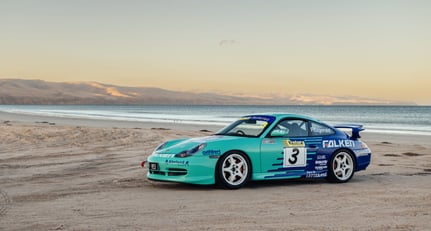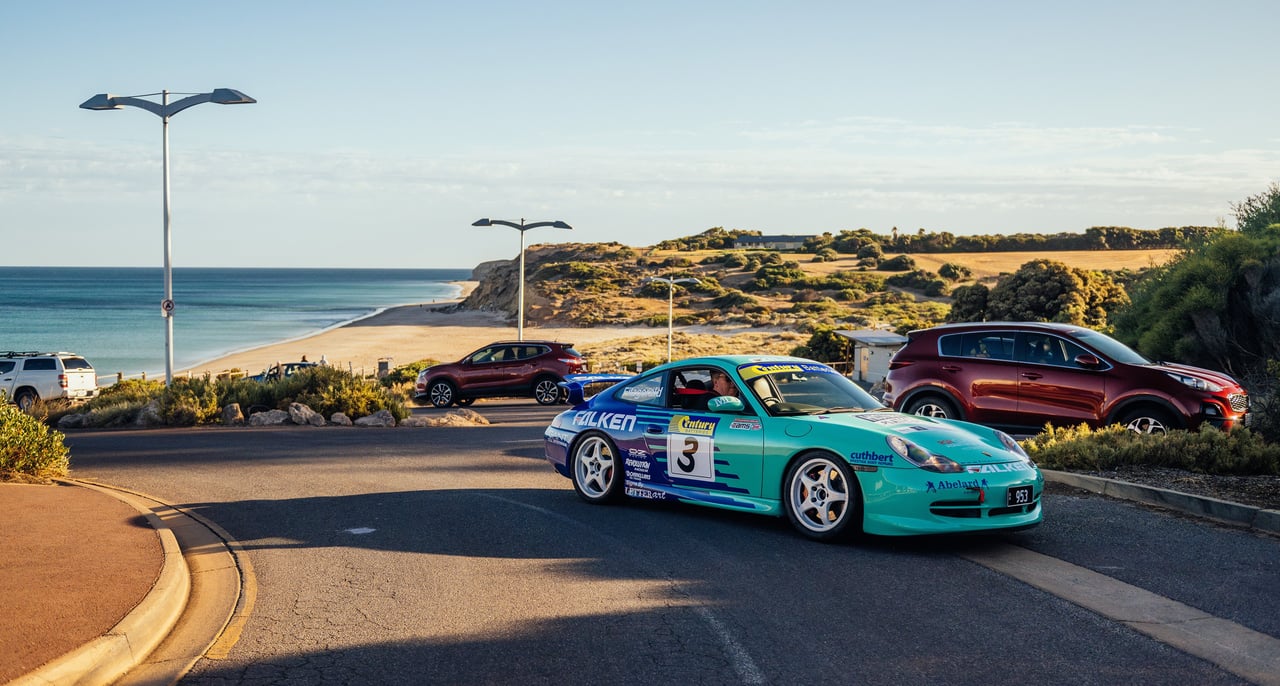
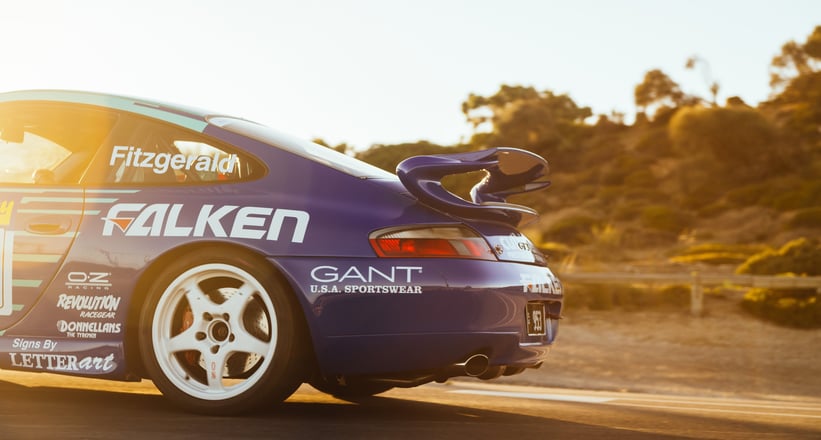
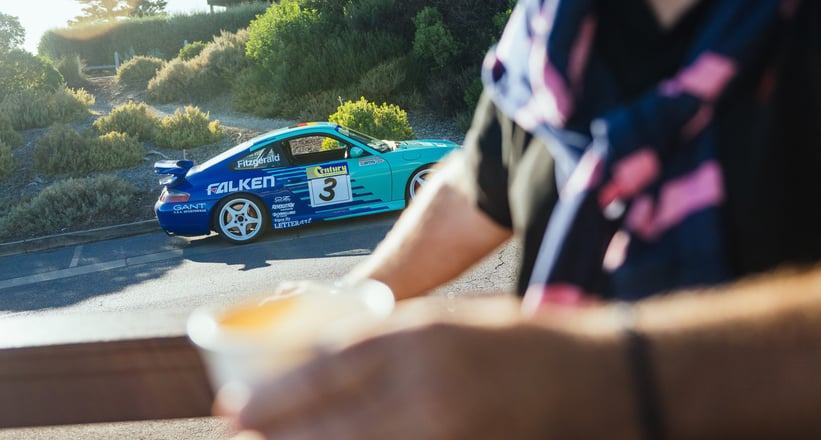
The ex-Peter Fitzgerald Nations Cup 996 GT3 sits pinging as it cools in the beach carpark at Port Willunga, South Australia. Its Falken Tyres livery, iconic in the motorsport community but utterly brash to the wider world, looks gloriously out of place among the morning dog walkers. Some of them give us knowing looks as they shake the sand from their shoes. They could probably hear us coming for miles in the still air, even though we were being careful. It’ll be 35-degrees later on; we’re not the only ones making the most of the cool morning.
Two double-shot flat whites arrive from the barista at the seaside Star of Greece cafe, but we don’t need the caffeine. We’ve just spent the morning driving one of Australia’s most famous racing Porsches on empty hills roads, now that it has full South Australian registration – quite a feat in a country famous for the strictness of its road rules.
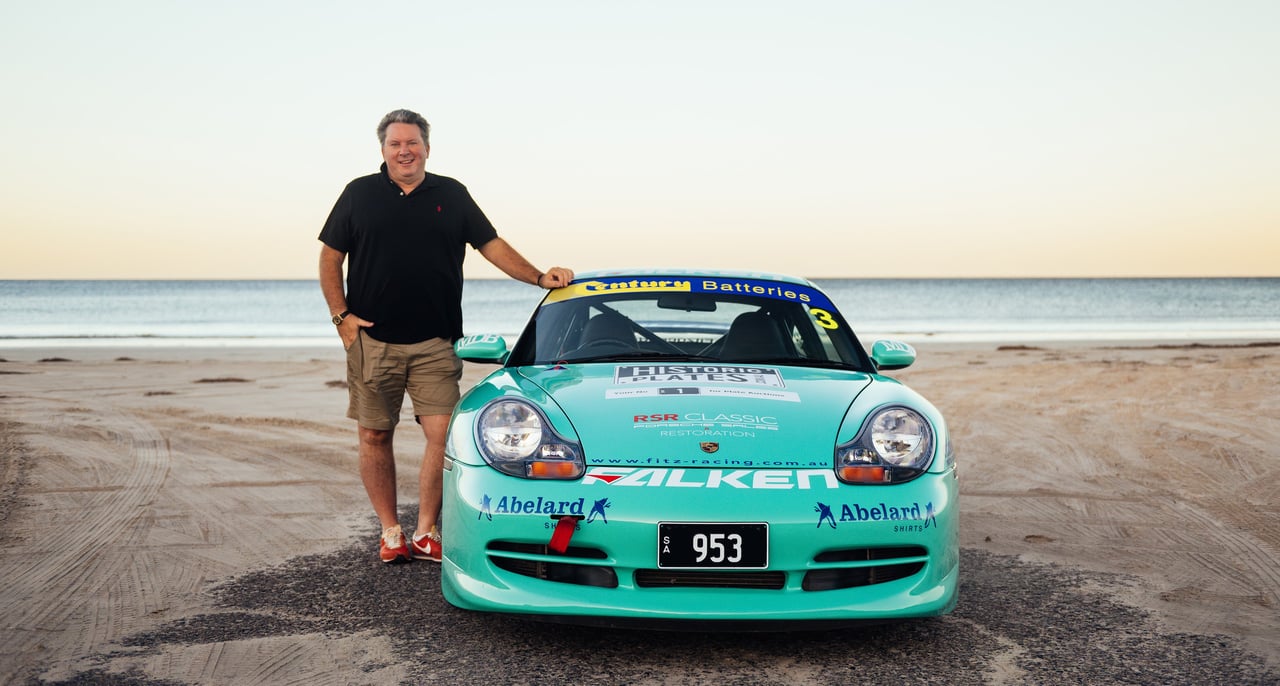
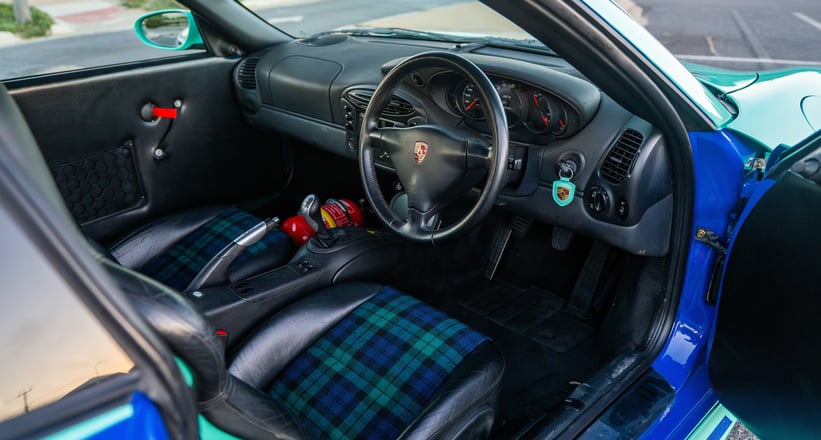
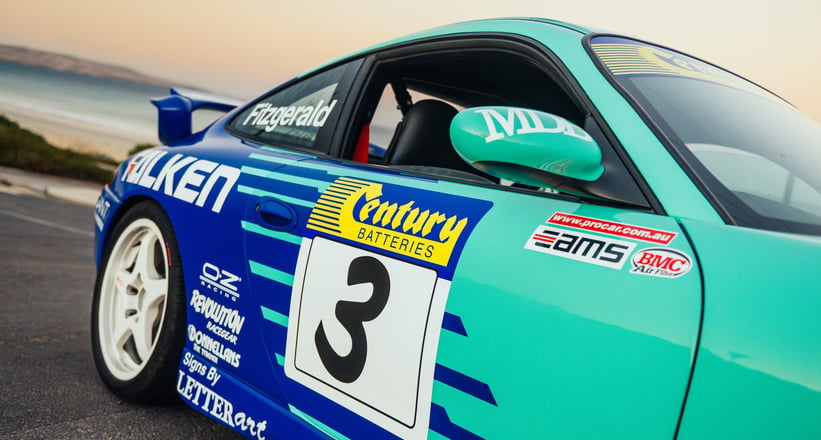
“Can you believe it now that Porsche never originally pitched the GT3 as a road car?” Explains Stewart. “It was a racing car designed for racing customers, this was before the RS and the Cup Cars, remember. They were road legal for homologation reasons but the majority of 996.1 GT3s were brought into Australia to be raced, it was the foundation of the Customer Racing program that really started to grow from there.”
Early 996 GT3s were hand-built by Porsche Motorsport at Weissach, right alongside the Cup and RSR racers that would never see the road. They were all built with the ‘003’ Clubsport option code, which included a full roll cage, firebomb system, Schroth harnesses, and a single mass flywheel. The Fitzgerald car was completed on July 17th, 1999, finished in Iris Blue.
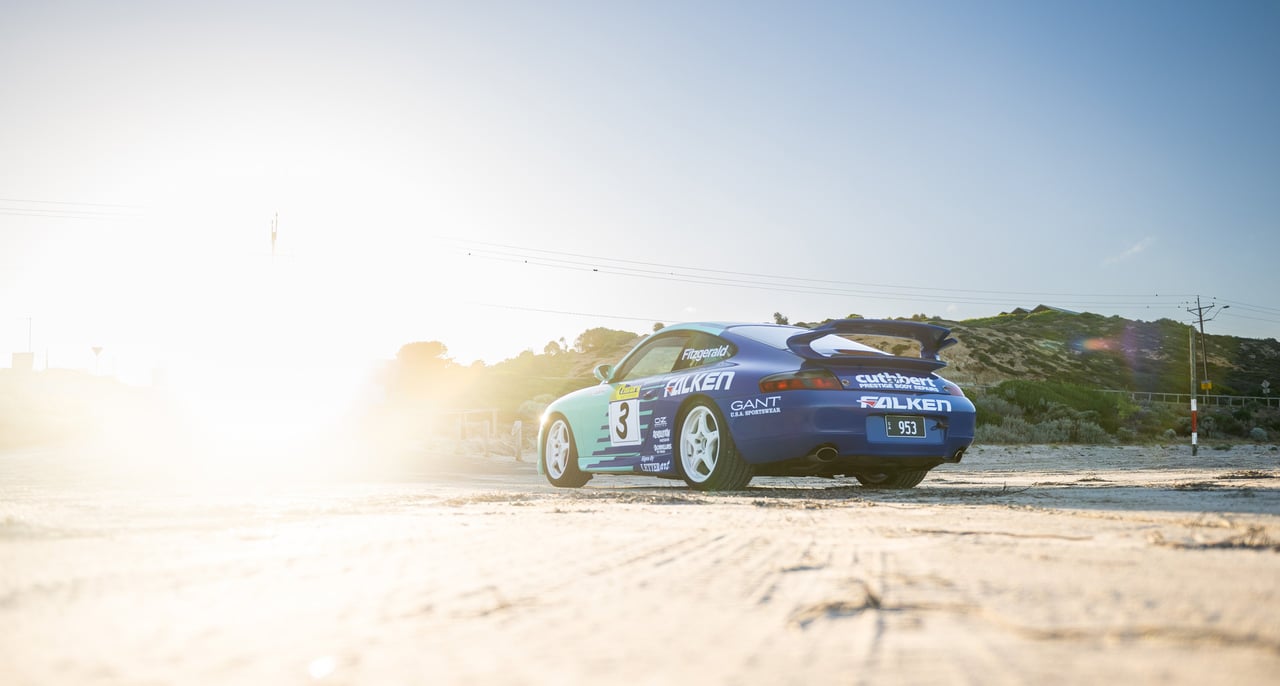
Numbers one and two waiting in the 996 GT3 line were already Australian Porsche royalty – seven times Bathurst 1000 winner Jim Richards, and his arch-rival Peter Fitzgerald, whose Fitzgerald Racing Services operation enjoyed significant support from Porsche Australia. The cars never saw a dealership - Jim and Peter went together to collect them directly from Melbourne’s wharf as soon as they’d been unloaded from the ship, putting out to pasture the 993 RS Clubsports they were both running.
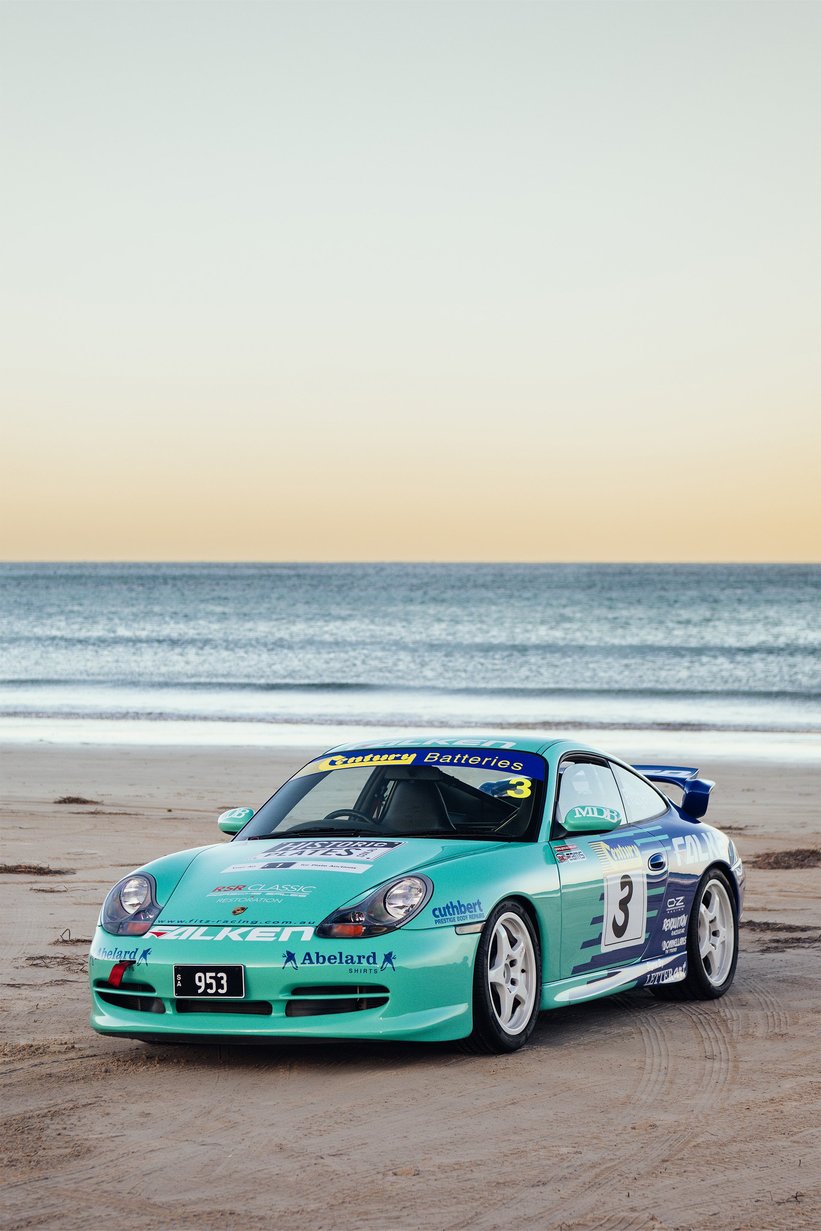
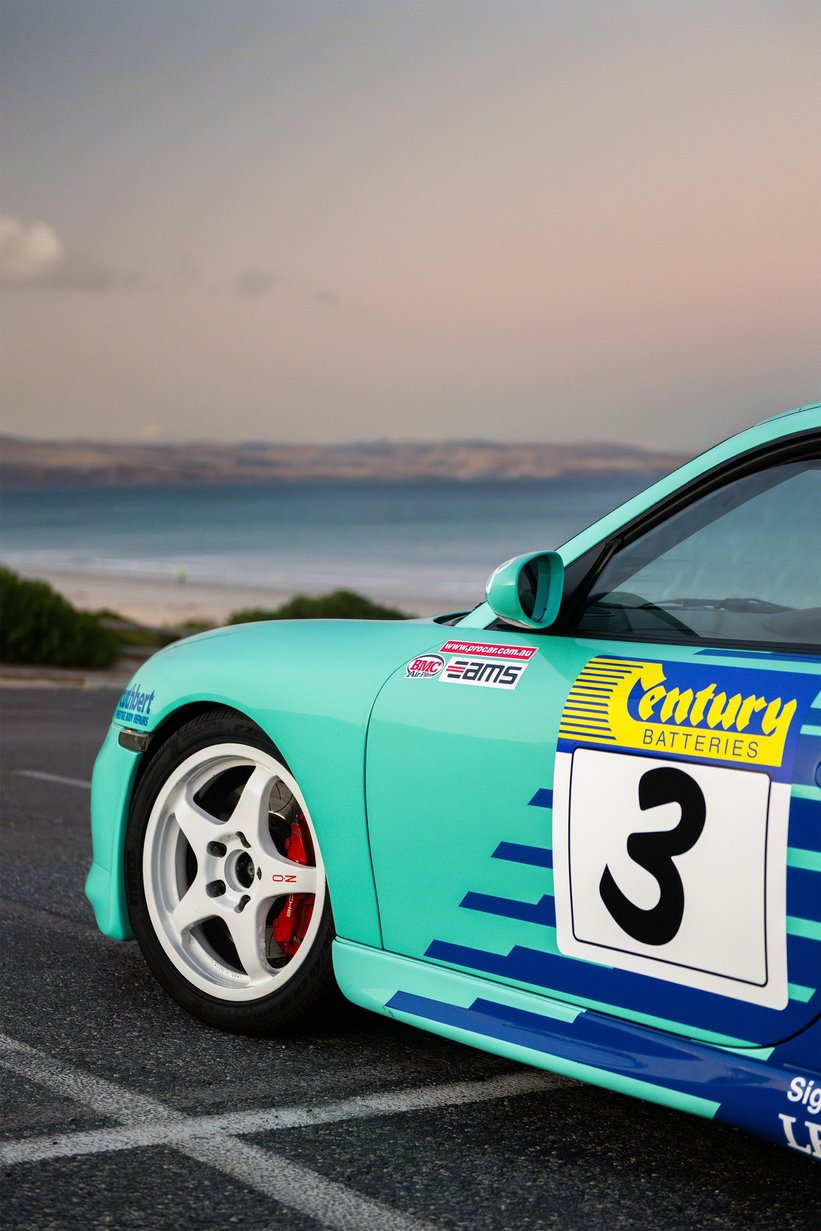
“They drove them straight from the wharf to the transport department, and Peter swears to this day that he beat Jim there and got his registered first, making my car Australia’s first GT3! With road registration in place, they went straight to their respective workshops for race preparation, and they were out testing within a few weeks.”
The pair had their eyes set on the new Nations Cup championship, which was making its debut as the millennium turned. It would be the leading series for production GT cars, supporting the headline Holden-versus-Ford V8 Supercars championship at the peak of its popularity. Freedom was given for wheels, tyres, brake pads, ECU, clutch, springs and dampers, and safety equipment, but otherwise the cars remained stock.
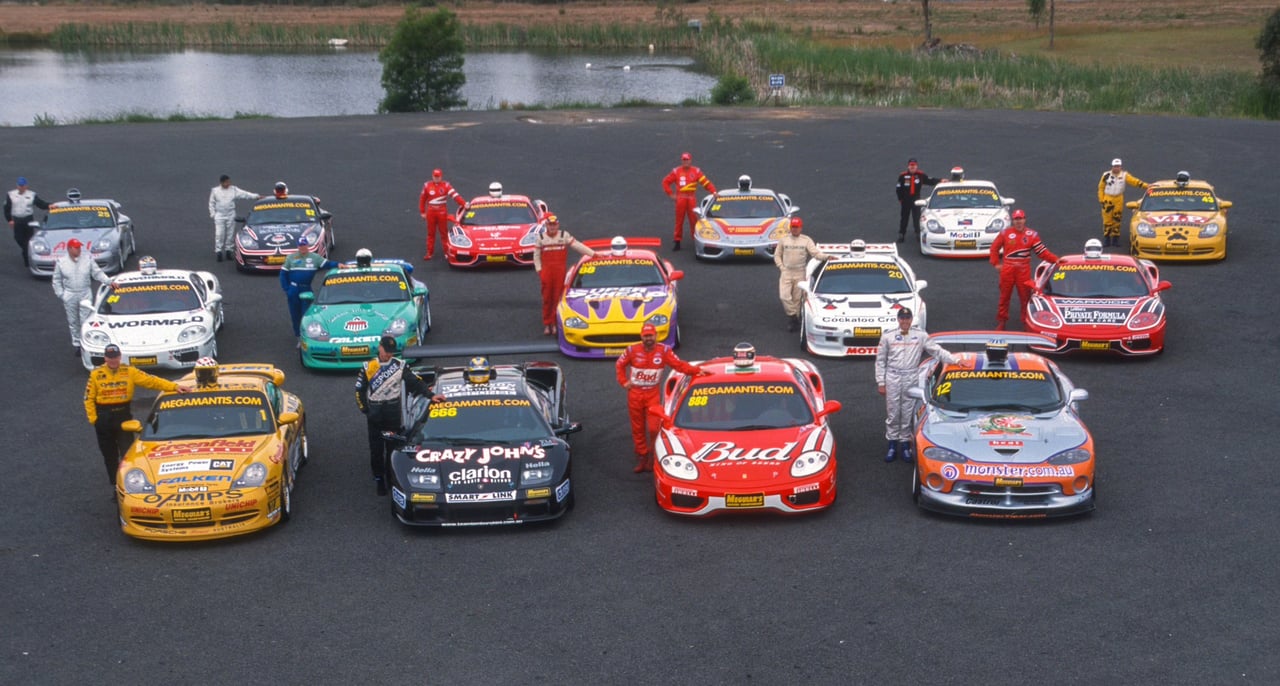
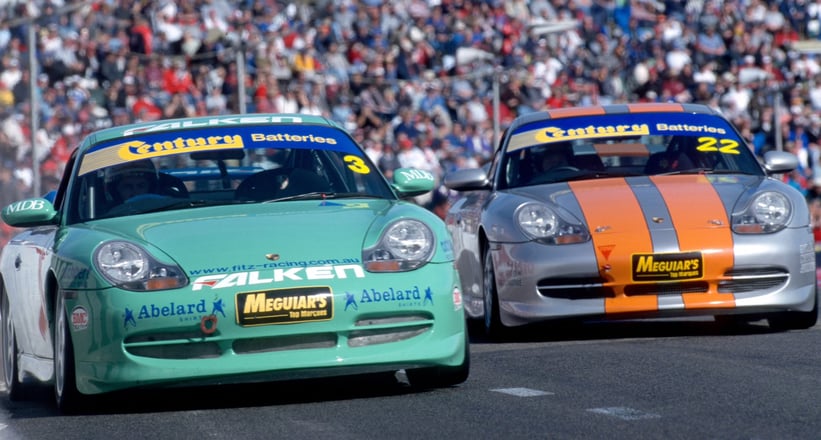
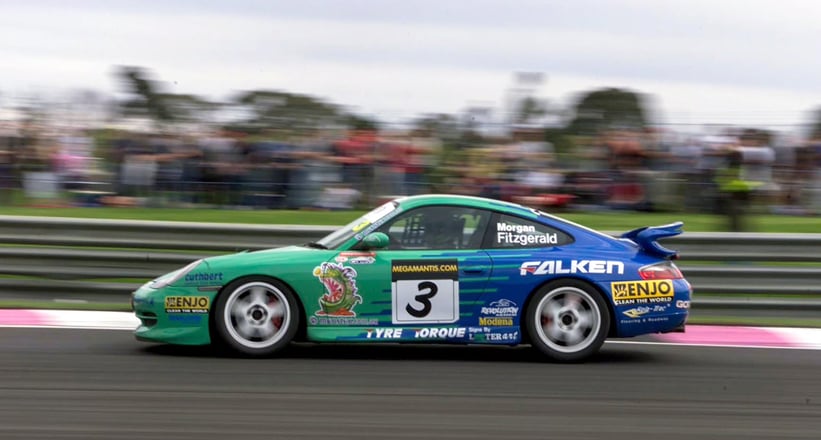
The entry list for the opening round on Adelaide’s Street Circuit makes for incredulous reading today. Fitzgerald and Richards weren’t alone in representing Stuttgart – there were 13 other 996 GT3s entered that weekend. Mark Noske led the charge for Prancing Horse Racing in the Ferrari 360 Challenge, fastest of the four shrieking 360s that weekend. Open-wheel ace Paul Stokell represented Team Lamborghini Australia in a Diablo SVR, and Geoff Morgan, Rustry French, and D’Arcy Russell brought a trio of Dodge Viper ACRs.
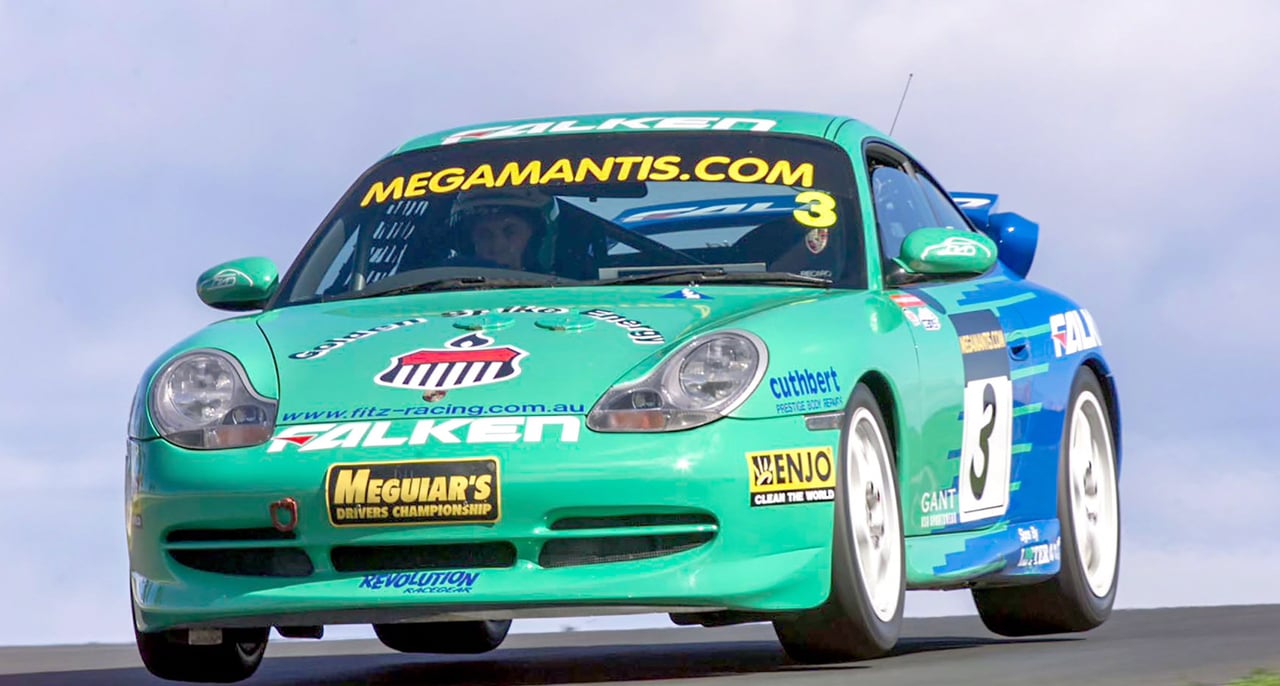
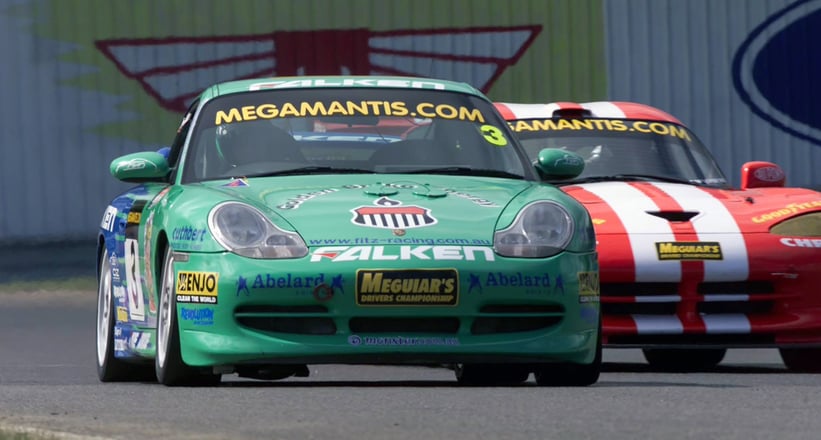
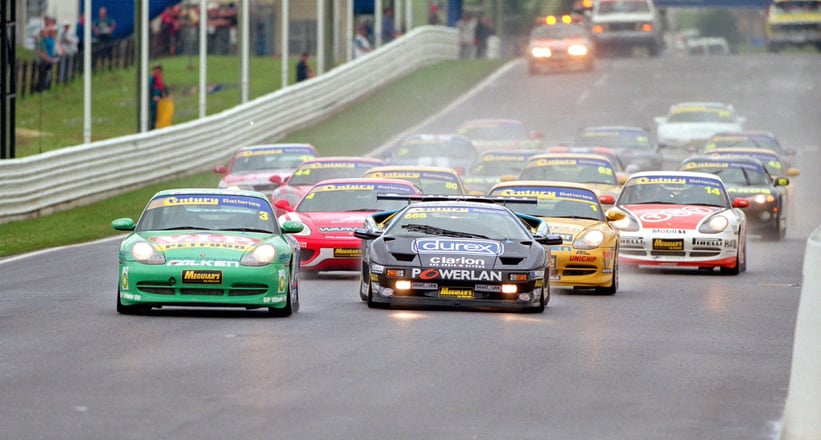
First blood would go to Noske, claiming the opening round for Ferrari. Fitzgerald would win the third round in Canberra, with Richards taking three round wins and the 2000 Nations Cup championship. Fitzgerald finished second that year, delivering Germany a one-two.
Richards would win the championship again in 2001, ahead of Paul Stokell, now driving the upgraded Diablo GTR. Fitzgerald would finish third, but the conclusion of the 2001 season at Sydney’s Oran Park marked an important moment in Porsche history.
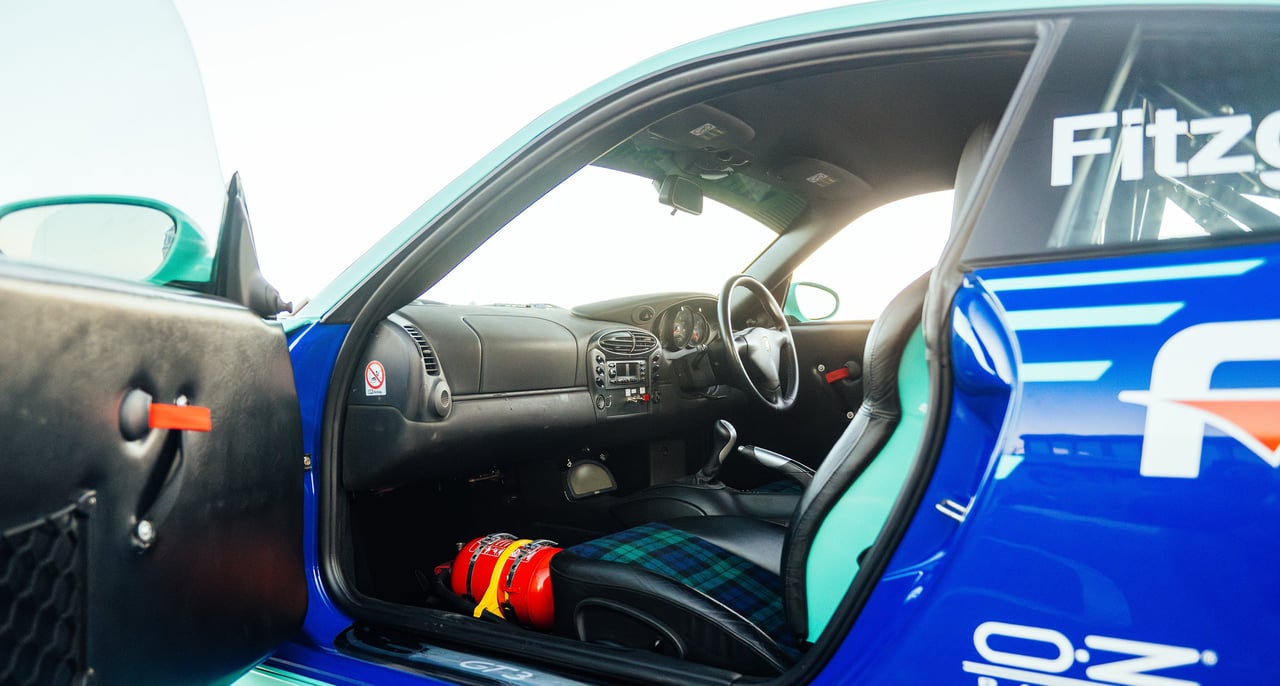
For 2002, the rules were loosened and the new 996.2 GT3 Cup, developed for Porsche’s Carrera Cup one-make series, would be eligible. These left-hand drive cars were now built purely for racing, marking the end of a time when a roadgoing 911 could be used to compete at the highest levels of GT racing.
Fitzgerald upgraded to a 996.2 GT3 Cup for the 2002 season and sold the 996.1 on. As is the case for most outdated racing cars, it passed through a series of owners over the years, was repainted at least twice, spent time as a tarmac rally car, and at one stage was even fitted with a 997 Cup engine and sequential transmission.
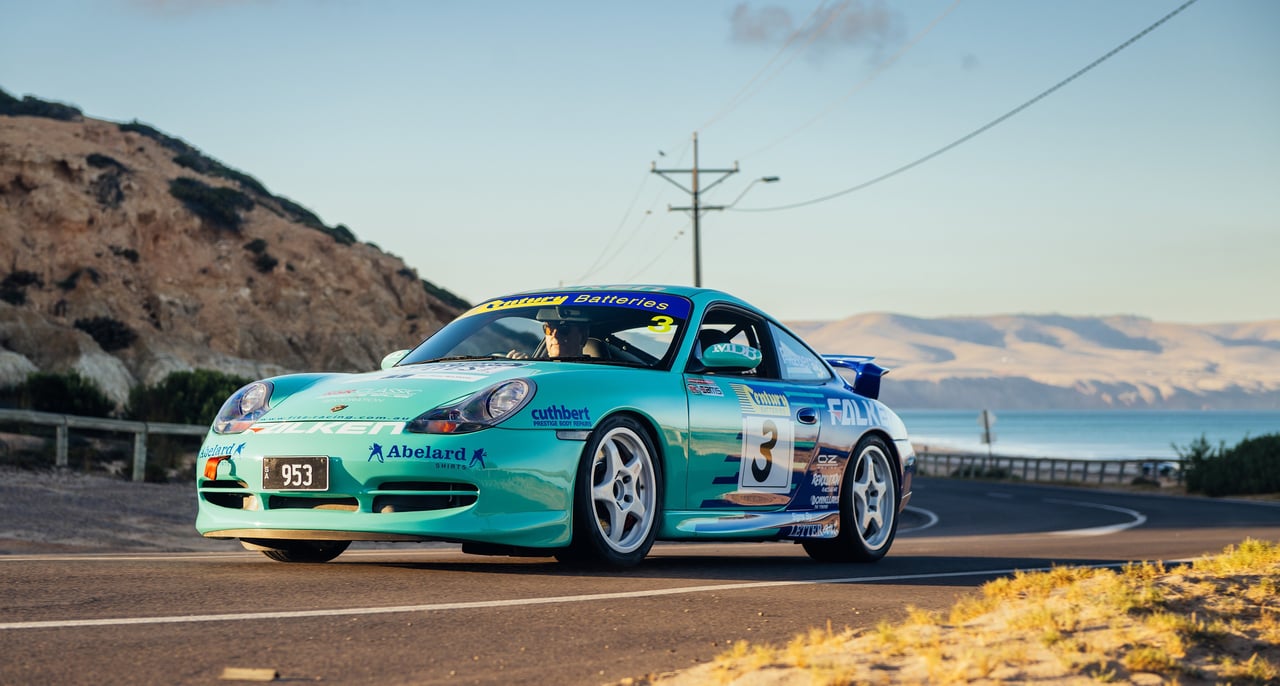
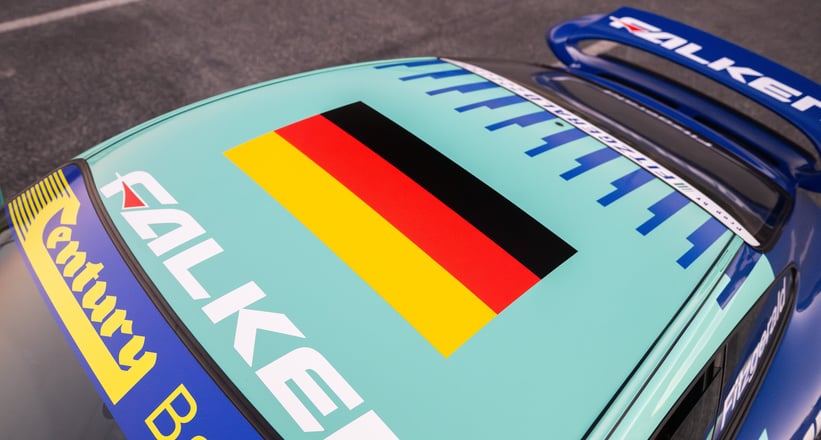
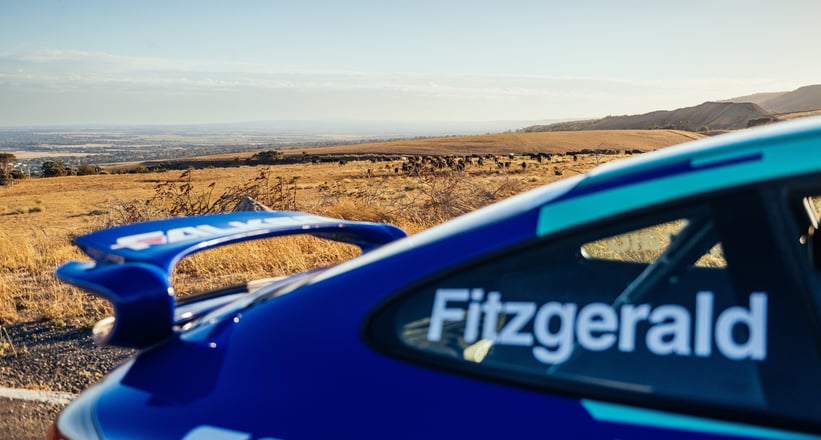
“Some friends in Sydney had started restoring a 1973 2.7 RS, and in their research, they discovered the car had a fabulous rallying history in Ireland so put it back to that spec. And it got me thinking, what’s the last of the road registrable Porsche race cars?”
“This GT3 has raced at Bathurst, it’s been in the Formula 1 support race at the Melbourne Grand Prix, it did the Sandown 500, it even raced here in Adelaide when the American Le Mans Series held their 1000km race on New Year’s Eve in 2000. And all that time it had full Victorian registration, although it was never used on the street.”
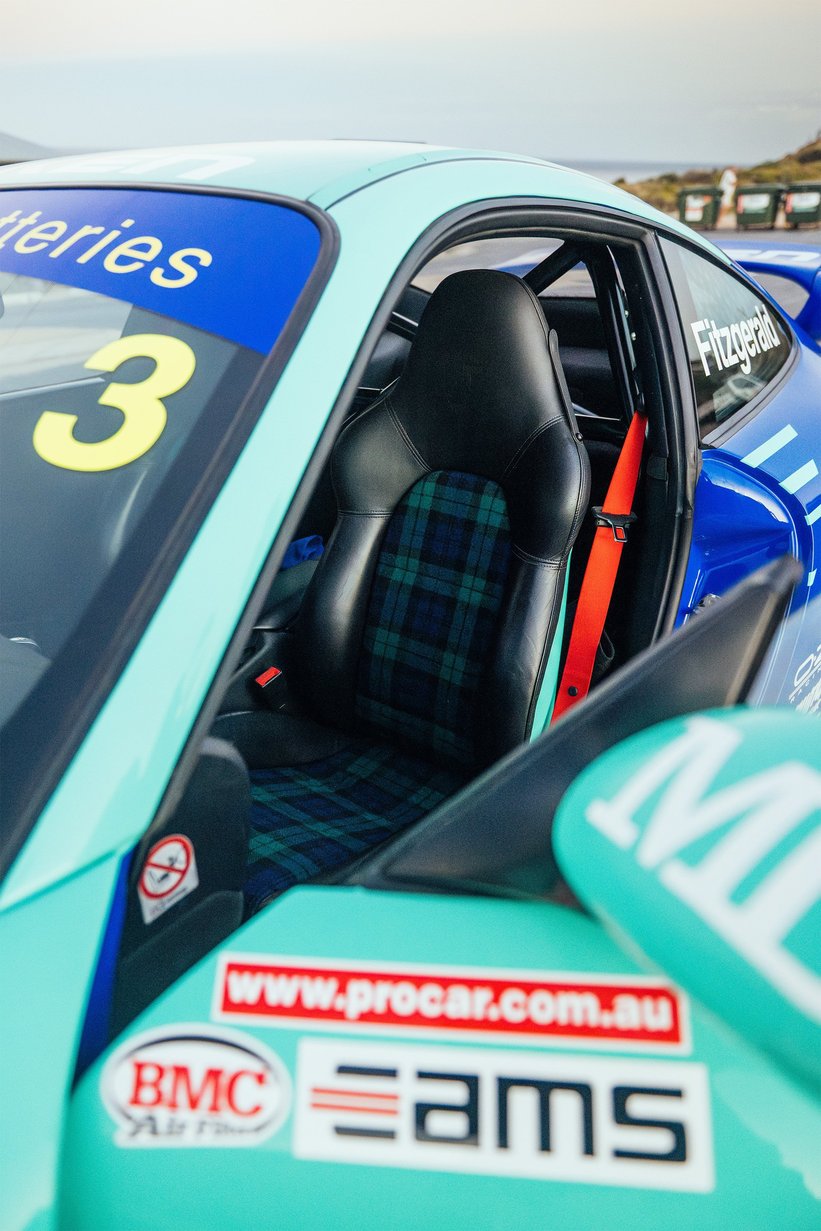
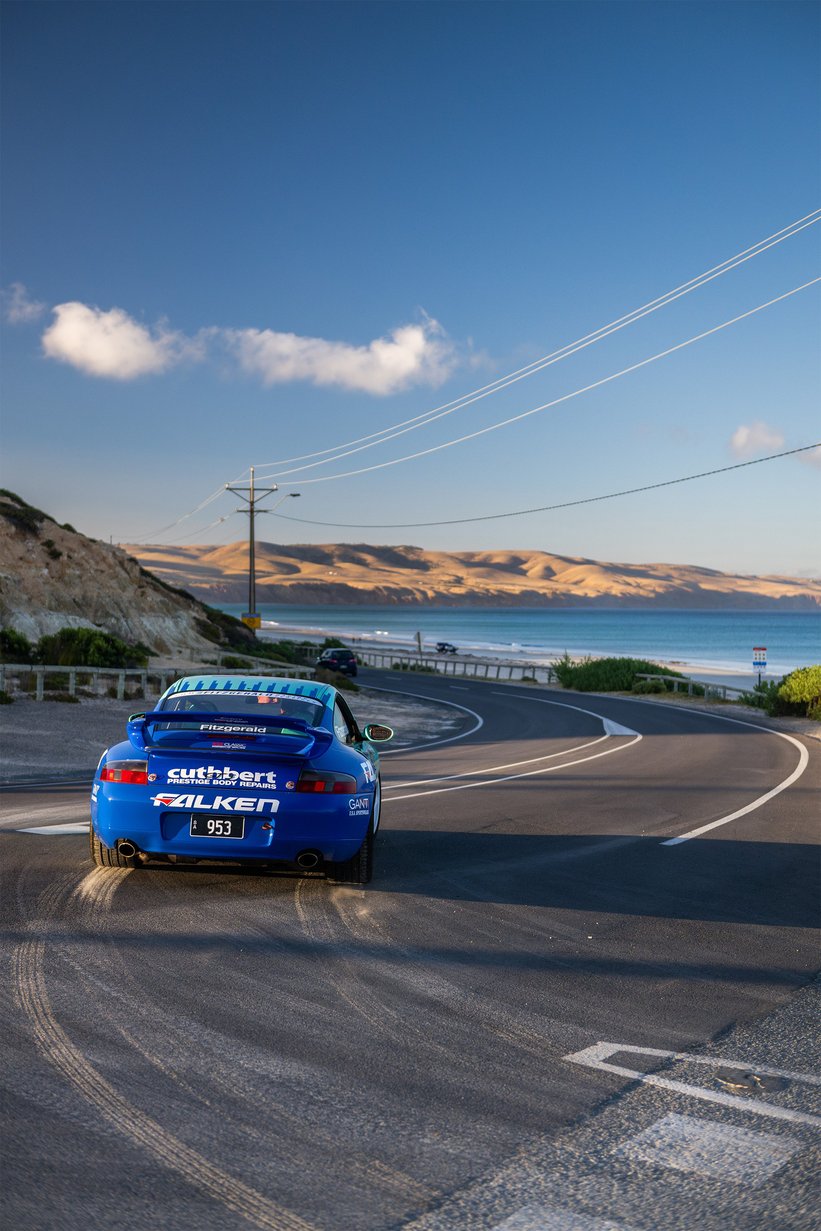
Stewart acquired the car in 2020, and embarked on a restoration that would not only pay homage to its history but set it up to be enjoyed in the years to come. Luckily, it had never been seriously crashed and a previous owner had put it back to its painted Falken livery, with the factory Iris Blue still evident in several hidden places. The original matching numbers engine and gearbox had also been reunited with the car.
Stewart had a clear vision of how he wanted to use it. His small garage already includes a breathtakingly unrestored 1965 901 - the third right-hand drive car built and the very first delivered to Australia - a 1975 build 924 Group 4 Rallye driven by Jürgen Barth and Roland Kussmaul in the epic 18,500km 1979 Round Australia Trial, a manual 928, and a 996 Carrera for blending in. The Fitzgerald GT3 would have a place as a weekend café racer, but still capable of casual track use when required.
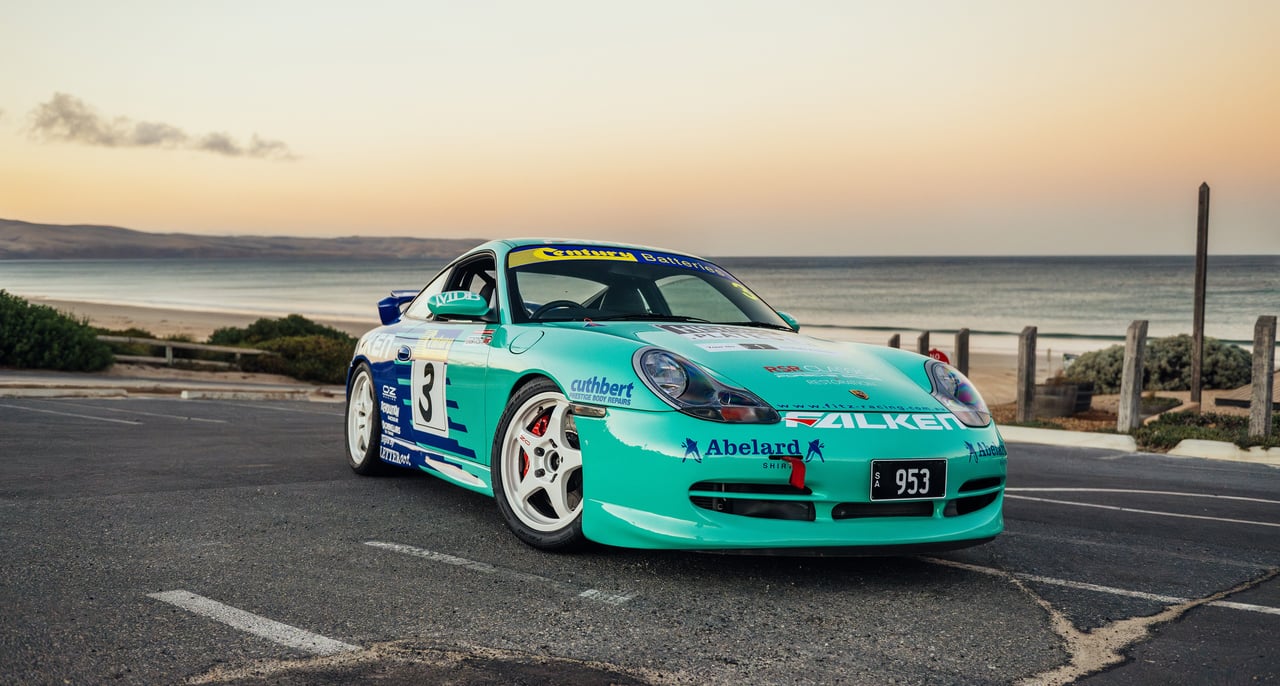
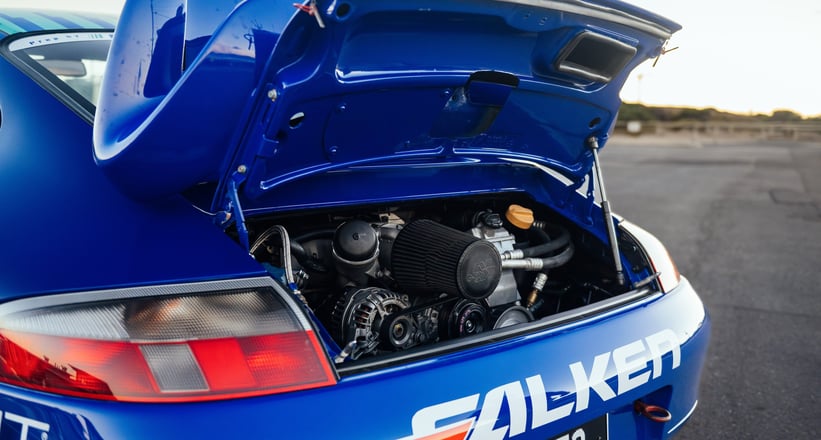
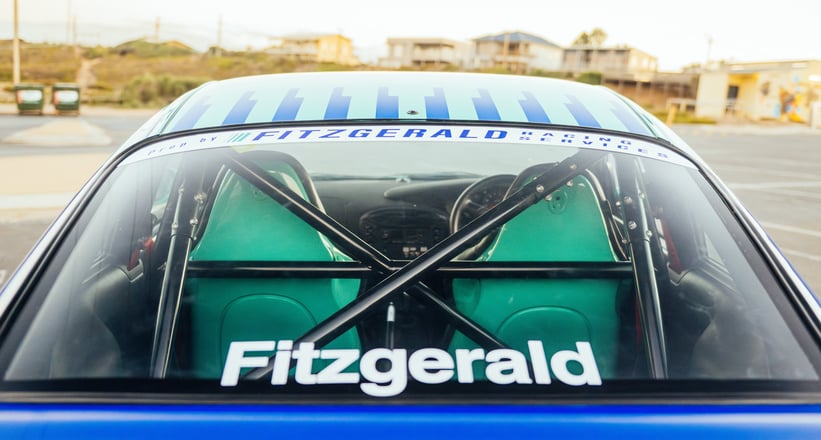
The majority of the GT3 was complete, but the detailing was messy, and modifications back to original would be required to pass South Australia’s stringent road inspection. The original matching numbers engine was now fitted with 997 GT3 Cup heads and intake which were retained, and a Cargraphic exhaust with catalysts was fitted. The roll cage was replaced with the factory Clubsport rear section, an air-jack system was removed, and the long-lost Clubsport interior trim pieces were tracked down and refitted. Clubsport optioned GT3s came with details like manually adjusted door mirrors and a plastic scuttle panel with a kill-switch recess, and Stewart was eager to ensure the details were correct. The lightweight door trims fitted as part of its 1999 race preparation by Fitzgerald were retained.
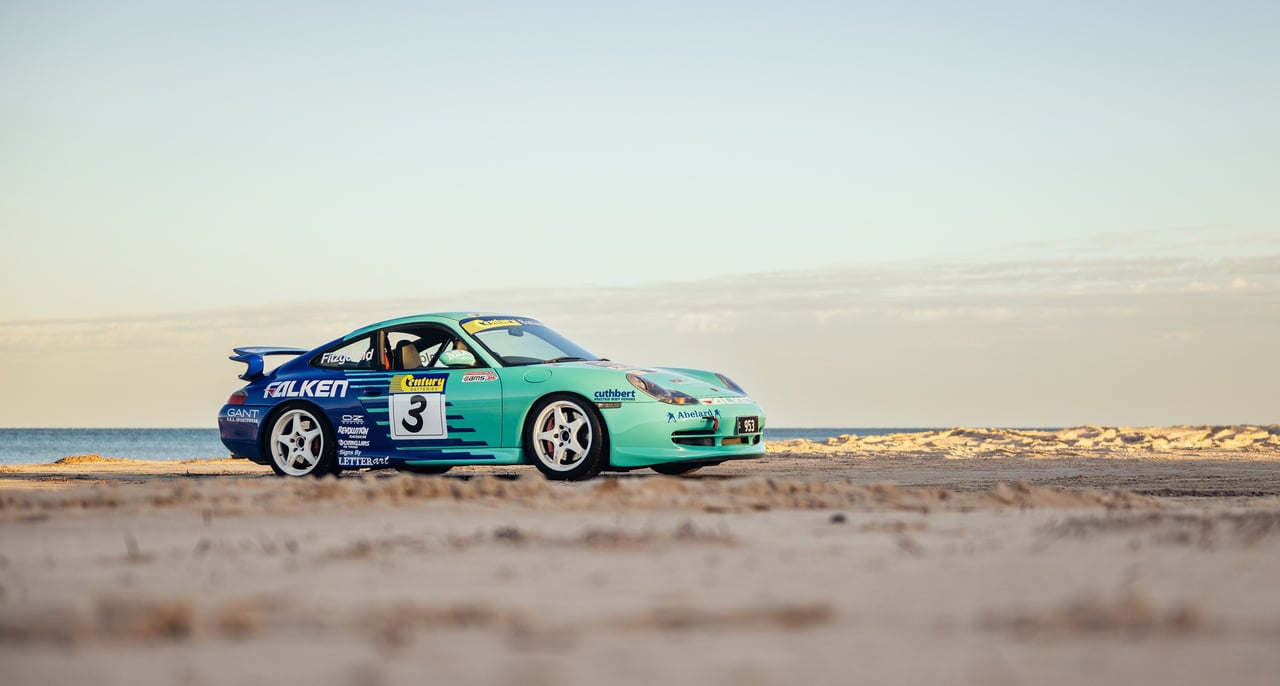
The period Motec digital dash, part of the tuneable Motec M8 engine management system permitted under Nations Cup rules, was relocated from the steering column to the lower console for visibility of the factory gauge cluster. A set of GT3 comfort seats were sourced and trimmed to match the livery (Stewart also has the pair of Clubsport Recaros the car was delivered new with, and the race bucket used in Nations Cup), and the original air conditioning and airbag systems were painstakingly refitted. In January this year, the GT3 turned a wheel on South Australian roads for the first time.
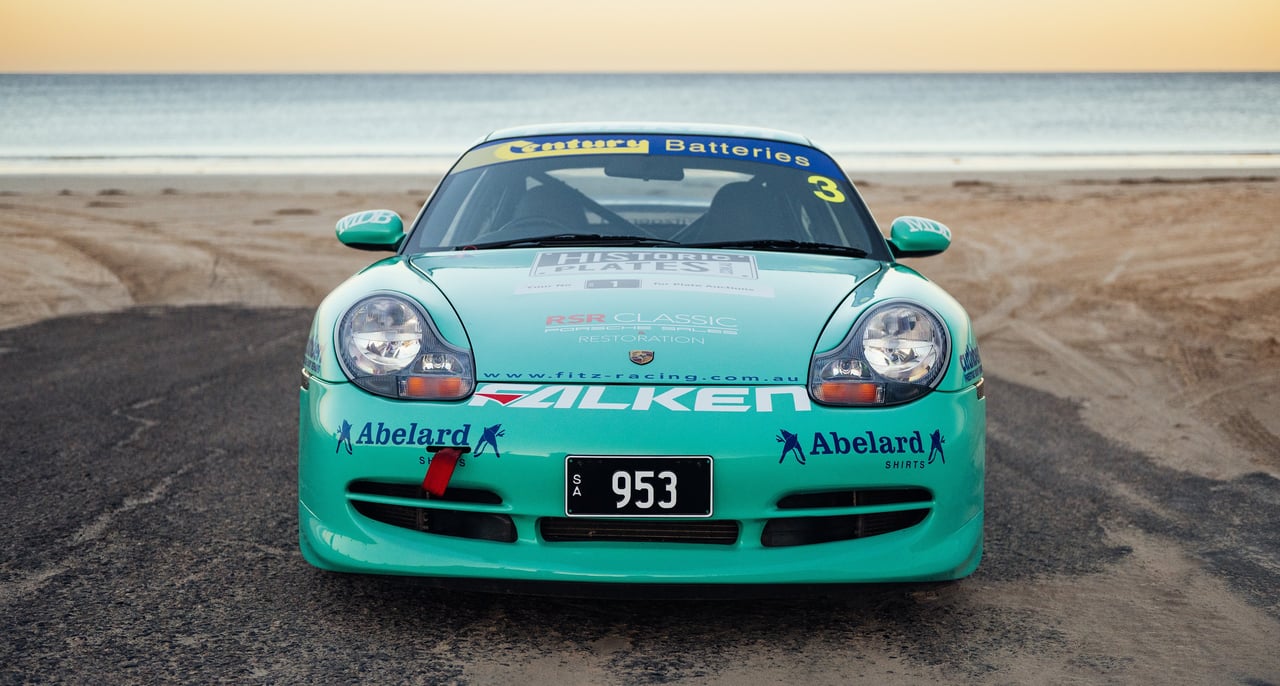

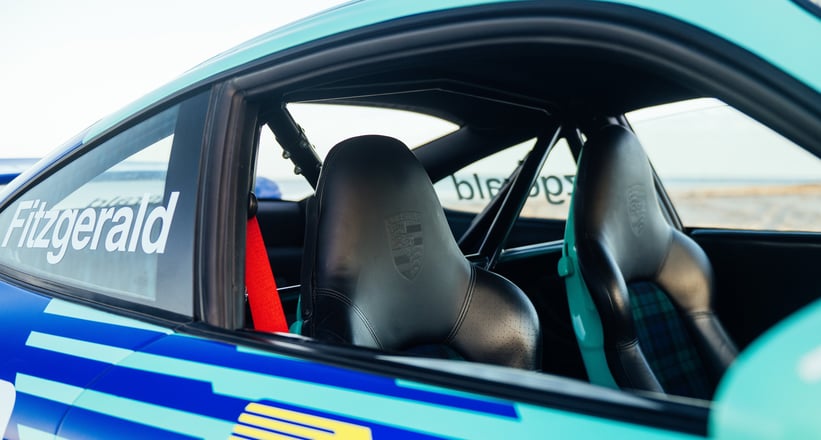
“Having the comfort seats and the air conditioning really enhances the usability of the car in a place like Australia, and I want to use this thing as much as I can. The suspension and brakes are all as it was raced in Nations Cup, and that engine is a monster. You certainly can’t drive it on the road like Fitzy did, the ability to be caught and locked up is just immense! The ride is hard and it’s very loud, but it really is a usable road car for these sorts of drives.”
As the water-cooled era continued to develop, Porsche built an exceptionally profitable business around making grown men feel like racing drivers. But real racers now buy dedicated Cup Cars, and the very fact that the latest GT3 comes with puddle lights in the doors indicates times have changed.
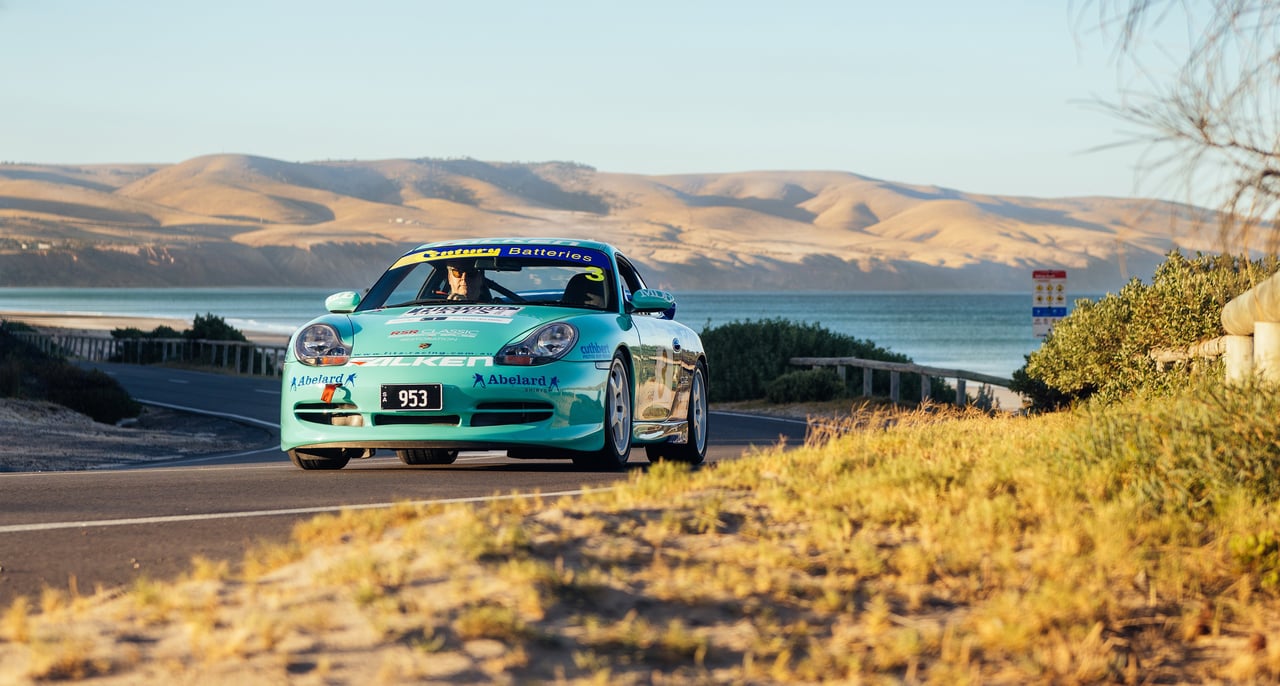
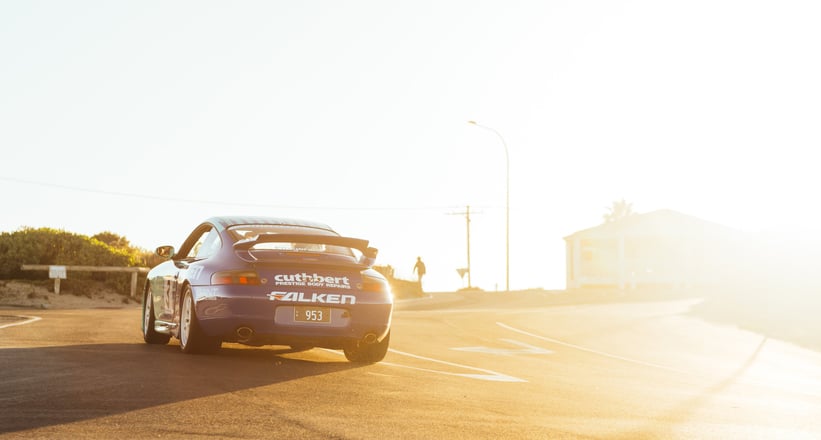
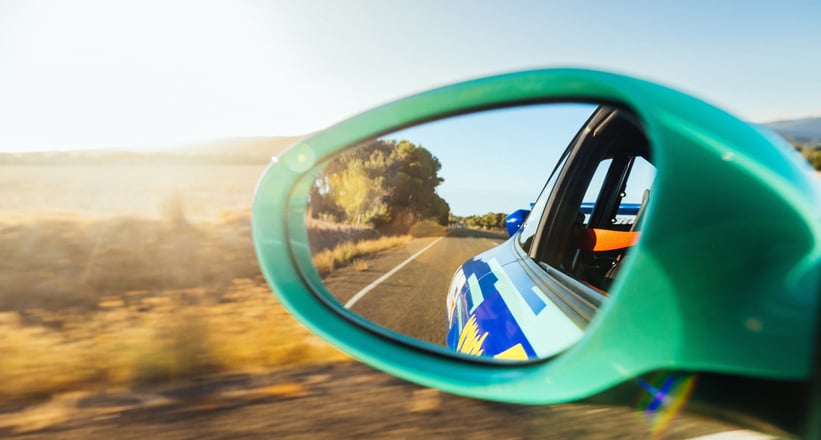
The 996.1 GT3 Clubsport marks the end of a time when Porsche’s most focused road cars were built for racing, when engineering was truly at the helm - a time before they figured out that making pretend race cars was vastly more lucrative than making actual race cars. This GT3 espouses everything that is good about the Sports Purpose movement – an actual race car on the road, just like in times gone by. It is, at least in Australia, the last of its kind.
That’s a hell of a lot to convey to some dog walkers at dawn on a Friday – no wonder they gave us those bemused looks.
Photos by Andrew Coles / Period Photos courtesy of Stewart Kay
